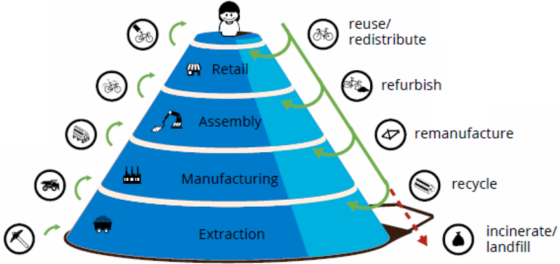Circular business models focus on a different phase of the value chain, either the design and manufacturing phase, the use phase or the value-recovery phase. The strategies increase stakeholder benefit along the value chain by modifying the pattern of product and material flows through the economy and optimizing capacity utilization.


Circular-design models apply reduce/recycle strategies in a product's design/production phases by focusing on the development of existing or new products and processes that optimize circularity. Traditional material inputs from virgin resources are replaced with bio-based, renewable or recovered materials and reduce demand for virgin resource extraction.
Optimal-use models apply reuse/repair/repurpose/refurbish/remanufacture strategies in a product's use phase with the aim to increase the value and use of the product during its effective useful life. The business models often build on retained ownership of a product by providing it as a service rather than selling it (e.g., service as a product or equipment leasing) and/or take responsibility for the product throughout its useful life through maintenance service and add-ons to extend the life of the product.
Value-recovery models apply recycle/recover strategies that focus on the recovery and recycling of products and materials after use into new products or useful resources, thereby reducing wastage and conserving resources. It involves reverse logistics, where the product is returned to the manufacturer or distributor for servicing, refurbishment or recycling.
For all business models, circular support involves the management and coordination of circular value networks, resource flows, incentives and other supporting activities in a circular network. It includes the development or deployment of technologies that facilitate the operation of circular business models.
